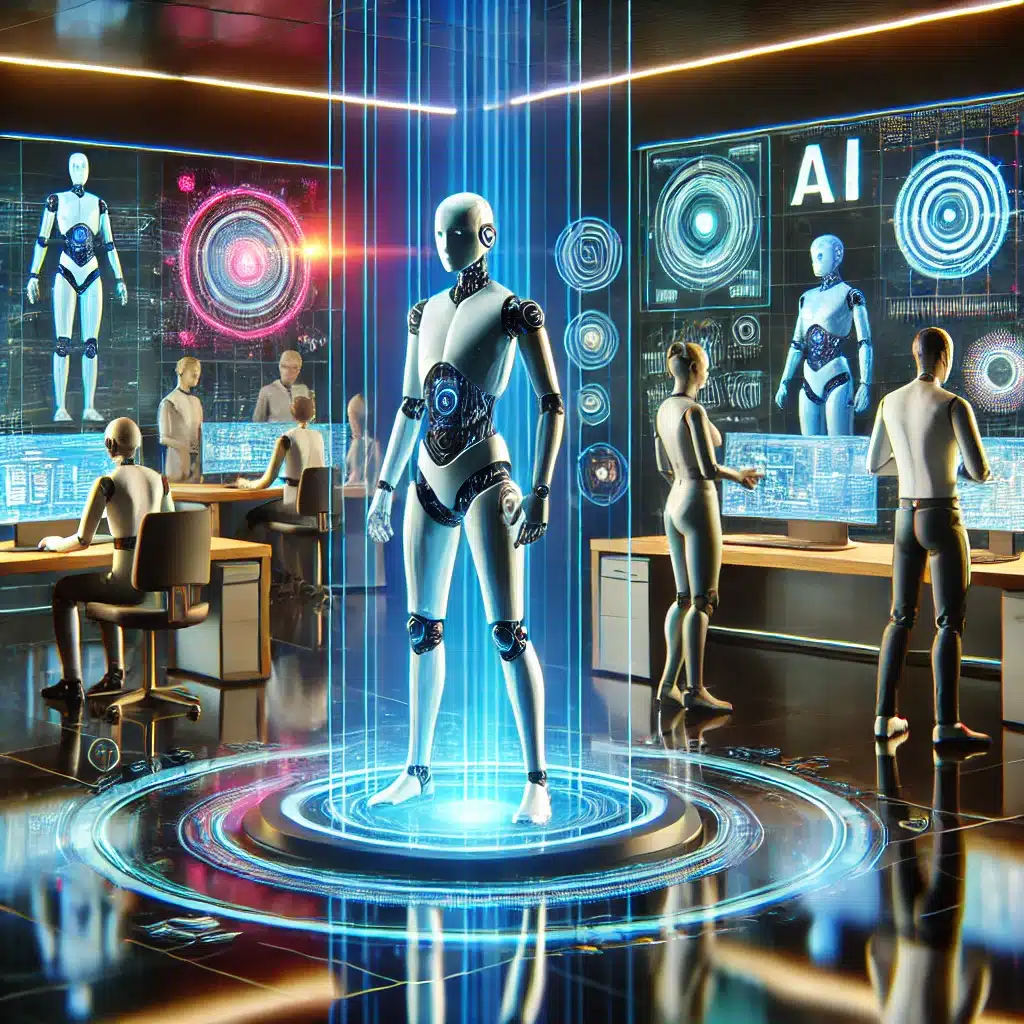How to Build AI Agents: Revolutionizing Automation with Digital Workers
How to Build AI Agents: Revolutionizing Automation with Digital Workers

In today’s fast-evolving technological landscape, AI agents are redefining how businesses operate, replacing rigid processes with dynamic, reasoning-driven systems. AIgent, LLC is at the forefront of this transformation, helping organizations leverage the power of AI agents to save time, enhance efficiency, and unlock new possibilities. Let’s dive into what AI agents are, how they work, and how you can start building these digital collaborators for your business.
What Are AI Agents?
AI agents are more than just programs that follow a predefined set of instructions. These intelligent systems leverage large language models (LLMs) to analyze tasks, make decisions, and execute them autonomously. They combine automation with reasoning and adaptability, moving beyond simple task execution into realms traditionally reserved for humans. Essentially, they function as AI workers within your digital infrastructure.
For example, AI agents can handle everything from customer service interactions to complex workflows like legal research or architectural design. This leap in capability turns software into a true digital workforce.
The Core Components of an AI Agent
- Perception
AI agents begin by collecting input from their environment, whether it’s text, voice, images, or API calls. This data forms the foundation for understanding the task at hand.Example: A virtual travel agent processes a user’s request for a trip, extracting key details such as dates, destinations, and preferences to guide its search. - Brain (LLM)
At the heart of the agent lies an LLM, responsible for reasoning, planning, and adaptability. This brain enables the agent to analyze input, develop strategies, and execute tasks efficiently.Example: After gathering travel details, the agent plans the steps needed to find flights, book hotels, or suggest itineraries based on user preferences. - Memory
Agents use short-term memory for real-time interactions and long-term memory stored in external databases to recall user preferences or past interactions.Example: A travel agent remembers your frequent flyer information and preferred airlines from previous sessions to offer tailored options. This highlights the importance of memory in the roles of AI workers. - Knowledge
Access to knowledge bases, such as FAQs or company-specific documentation, allows agents to provide accurate and contextual answers.Example: A customer service agent retrieves details about refund policies or product specifications to resolve queries seamlessly. - Actions
Tools like APIs enable agents to perform real-world actions, such as updating systems, sending emails, or booking appointments.Example: A travel agent fetches flight options in real-time and finalizes bookings once the user confirms their choice.
Designing an AI Agent: From Idea to Implementation
Building an AI agent is akin to hiring and onboarding a new employee. Here’s how you can approach the process:
- Define the Agent’s Persona and Goals
What is the agent’s role? What problem does it solve? Clear goals help shape its functionality. For instance, is the agent a customer support specialist, a virtual assistant, or a data researcher—essentially defining their role as AI workers within your organization? - Outline Tasks and Workflows
Map out the agent’s key tasks and the workflows it will manage. Start simple, and iterate based on performance. - Incorporate Memory and Knowledge
Decide what data the agent should retain and how it will access company-specific knowledge. Memory systems should be scalable and regularly updated. - Equip the Agent with Tools
Define the APIs and tools the agent will use to interact with systems and perform actions. Role-based permissions ensure security and efficiency. - Iterate and Improve
Just as employees grow through experience, agents improve through feedback. Regularly update and refine their capabilities based on user interactions and performance metrics.
Beyond the Basics: Designing Teams of AI Agents
For complex tasks, a single agent may not suffice. Instead, consider building a team of specialized agents that collaborate to achieve larger goals. For example:
- One agent collects data.
- Another analyzes it.
- A third generates solutions.
- A fourth refines the output.
This modular approach mirrors a team of employees working together, ensuring efficiency and scalability. This structure allows AI workers to function effectively as a cohesive unit.
Key Considerations: Security, Operations, and Scalability
As with any new technology, implementing AI agents requires careful attention to security, operational oversight, and scalability:
- Security: Protect sensitive data with role-based permissions, credential management, and regular audits.
- Operations: Use performance tracking tools to monitor agent effectiveness and adapt as needed.
- Scalability: Plan for growth by building agents that can integrate seamlessly into expanding workflows.
Why AIgent Is Your Partner in Building AI Agents
AIgent, LLC specializes in creating intelligent automation solutions that transform businesses. Whether you’re looking to streamline operations, improve customer experiences, or unlock new opportunities, we can help you design, build, and deploy AI agents tailored to your needs. Essentially, we help set up AI workers to improve your business processes.
Learn more about how AIgent can revolutionize your business at AIgentHelp.com.
Closing Thoughts
AI agents are not just the future of automation—they’re digital collaborators capable of solving complex problems with intelligence and adaptability. By designing these systems thoughtfully and understanding the full scope of AI workers, you can build a digital workforce that enhances efficiency, saves time, and drives innovation.
Ready to start your journey? Let AIgent guide you every step of the way. Visit AIgentHelp.com today to learn more.
https://medium.com/@cpdough/building-ai-agents-lessons-learned-over-the-past-year-41dc4725d8e5